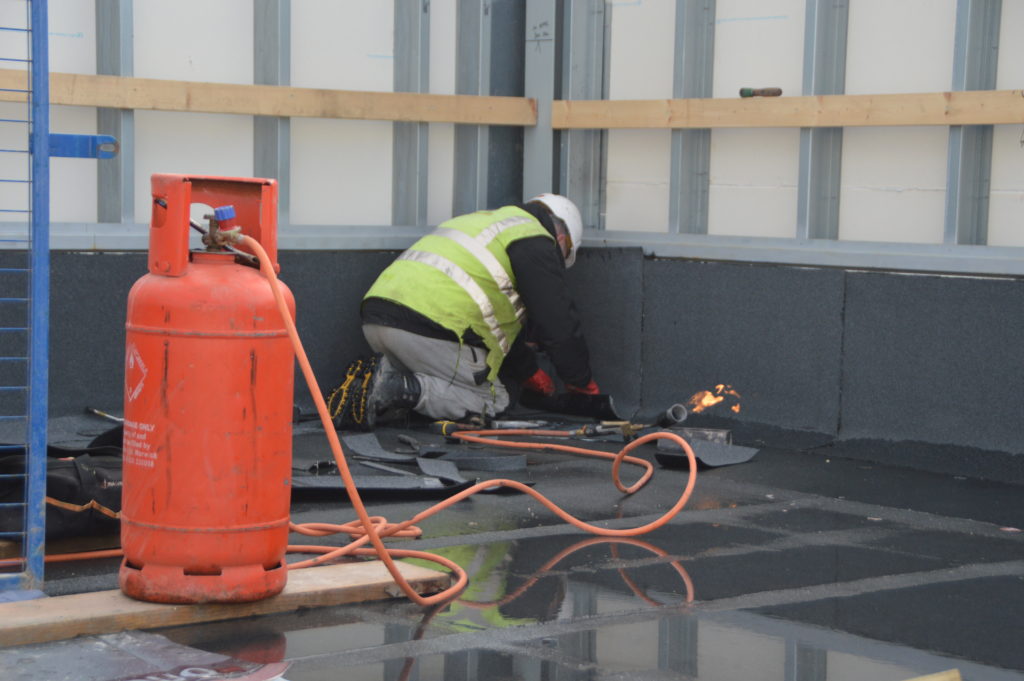How does a Permit to Work system help control site safety?
A permit to work system is an essential part of controlling hazardous tasks on site, helping to manage all the steps in the process.
15 August 2022

A permit to work system is an essential part of controlling hazardous tasks on site
By using a permit, you can ensure that hazardous tasks are completed safely and efficiently. A permit to work system helps manage all the steps in the process.
These include procedures to request, review, authorise, document, and most importantly, de-conflict tasks to be carried out by front line workers. It is an important form of communication between contractors and management.
In this blog post, we will discuss the benefits of using a robust permit process and how it can help control site safety.
What is a Permit to Work system?
A permit to work is a formal document that states exactly how, when, and where a task is to be completed. It includes set and limited permission for contractors to be on site to complete that specific task.
In simple terms, a permit to work system helps make hazardous tasks safer.
This is because it provides a clear and concise way to communicate the work that needs to be done, as well as the risks involved. It helps to protect both the person undertaking the tasks, and those around them.
It also ensures that only authorised personnel are allowed to carry out the work, and that they have the necessary training and equipment. By having a permit process in place, you can be sure that all safety procedures are being followed.
Why is a Permit to Work system important?
A permit process is important because it helps to prevent accidents and injuries from happening on site. By having a permit in place, you can be sure that all hazards are identified and controlled before work starts.
This system also allows you to monitor contractor performance, as well as keeping track of all hazardous activities on site. By using a permit to work system, you can be sure that your site is safe and compliant with all safety regulations.
How does a permit system help control site safety?
Your permit process controls site safety by providing clear and concise communication about the task and the risks involved. You can easily check that authorised personnel are carrying out the work, and that they have the necessary training and equipment.
In short, a permit to work system is an essential part of controlling work on site and helps to make workplaces safer.
Benefits of having a system in place
A permit to work system helps to control contractor management and hazardous tasks such as hot works on site.
Some benefits of using a permit to work system include:
Improved safety
Workers must complete tasks safely and efficiently. A permit to work system will help to prevent accidents and injuries on site.
Reduced costs
By using a permit to work system, you can reduce the costs associated with accidents and injuries. This system can also help improve productivity on site.
Improved communication
The permit to work system helps to improve communication between contractors and management. Therefore, this system can help to prevent misunderstandings and miscommunication on site.
Do you need a permit system in your workplace?
If you work in a hazardous industry, then it is likely that you will need a permit to work system. These industries involve high risks and require strict safety procedures.
If you are not sure whether or not your workplace needs a permit to work system, you should speak to your health and safety representative. They will be able to advise you on the best course of action for your workplace.
For instance, hazardous industries such as construction may need to issue Permits to Work for tasks such as:
- electrical installation
- hot works
- excavations
- heavy lifting
- working at height
- confined space works
If you work in one of these industries, or any other industry where there is a potential for harm, then it is important to have a permit to work system in place. Contractors must carry out work safely and efficiently. You must control all hazards where possible.
Book a personalised online demo
Implementing a permit system
If you want to implement a permit to work system in your workplace, there are a few things you need to do.
First, you need to identify the hazardous tasks that need permits. You should then create permit templates for each task, which should include all the necessary information such as:
- the name and contact details of the person responsible for the task;
- a description of the task;
- the location of the task;
- the date and time of the task;
- the risks involved in the task;
- the controls that are in place to minimise those risks.
Once you have created your permit templates, you need to train your employees on how to use them. This includes explaining what a permit is, why it is important, and how to fill out a permit application form.
You should also appoint someone to review and approve permit applications. Furthermore, this person should be competent and have knowledge of all the hazards involved in the tasks that require permits.
Once you have implemented your permit to work system, you should regularly review it to ensure that it is effective. You should also make sure that all employees are aware of the system and know how to use it.
If you follow these steps, you can be sure that your permit to work system will help to control site safety and prevent accidents and injuries from happening.
Consider going digital
Nowadays, there are many health and safety software applications that can help you to manage your permit process. Work Wallet is one, offering modular health and safety software solutions for all safety needs, including permits.
Using digital permits has many benefits, such as:
- Quick and easy to use;
- Allows you to track and monitor permit applications;
- Robust permit authorisation;
- Gives you instant access to all permit information;
- Helps improve communication between managers and contractors.
Fundamentally, a permit to work system streamlines the whole end-to-end process of contractor management. Contractors get on site and at work quicker, knowing they have all the permissions they need. Contractors can completed it all before they even arrive on site, or instantaneously as circumstances evolve. Additionally, you can also close down tasks remotely when work is complete.
If you want to make things even easier, you can integrate your permits with other health and safety management systems, such as incident reporting or risk assessment software. As a result, this will allow you to have all your health and safety information in one place, making it simpler to manage and monitor.
Do you need help implementing a system?
If you are looking for a permit to work system for your workplace, then Work Wallet can help.
We offer a range of flexible software solutions that can be tailored to your specific needs, at affordable prices.
Contact us today to find out more, or book a demo.
Share post
More Posts
The importance of Asset Management software for a safe workplace
Oct 2022
Your assets are an important part of your workplace, and it is essential that you have a system in place...
Taking contractor management seriously: Creating an effective permit to work process
Aug 2022
Contractor management should not be taken lightly. Contractors need information and permissions to complete tasks safely and efficiently.




